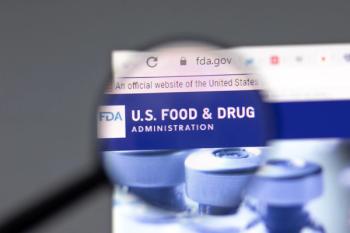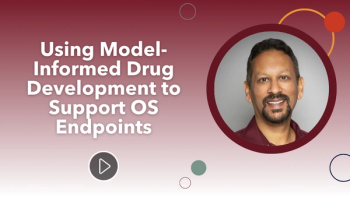
Characteristics of the Successful IND or IDE
Tips for avoiding a clinical hold.
The Center for Drug Evaluation and Research, Center for Biologics Evaluation and Research, and Center for Devices and Radiological Health (CDER, CBER and CDRH) will review all new investigational new drugs (INDs) or investigational device exemptions (IDEs) within 30 calendar days of receipt and determine whether the application supports commencement of the planned clinical trial(s) or whether a clinical hold should be imposed. The Food and Drug Administration (FDA) may impose either a complete clinical hold, in which case a delay or suspension of all clinical work requested under an IND or IDE is invoked, or a partial clinical hold preventing only part of the proposed clinical work requested under the IND or IDE from being conducted.
The distinction between complete and partial clinical holds, while administratively significant, may be even more important in illustrating the FDA’s underlying philosophical basis for IND and IDE decision making. The FDA will generally permit clinical trials to proceed where they do not present unreasonable and significant risk of illness or injury to human subjects. The evaluative criteria establish a risk/benefit weighing calculus that involves balancing the available safety data submitted in the investigational application against the magnitude, scope and duration of the proposed clinical trial. Stated simply, basic safety data that might be deemed insufficient to support conduct of a large clinical trial may be sufficient to support a more modest trial plan. This risk/benefit calculus should be considered carefully in proposing clinical trial plans in any new IDE or IND.
Grounds for Clinical Hold
The grounds for imposing a clinical hold for investigational drugs or medical devices are to be found respectively at 21 CFR 312.42(b) and 21 CFR 312.30(b). The language of these two regulations is markedly different, but a single underlying and unifying principle is shared for both drugs and medical devices: Human subjects should not be exposed to undue risk in comparison to the potential benefit of the investigational treatment. This principle is stated somewhat differently for drugs, as a prohibition against exposing patients to “unreasonable or significant risks of illness or injury,” compared to medical devices, which require the determination that the risks to subjects “must be outweighed by the potential benefit to the subjects and the importance of the knowledge to be obtained.” In either case, the importance of the risk/benefit analysis can easily be appreciated.
For drugs and medical devices, some of the broader categories for invoking a clinical hold include:
- Untrue statements of material fact in an application
- Inadequate informed consent
- A scientifically unsound investigational plan
- Inadequate data provided in the IDE or IND
- A misleading investigator’s brochure
- Inadequately qualified investigators
The FDA lists criteria that can be invoked in supporting a clinical hold decision. The CDER Manual of Policies & Procedures MAPP 6030.1 speaks to 10 separate categories of clinical hold deficiencies, any one of which alone can justify a clinical hold decision. The 10 clinical hold categories are:
- Medical risk
- Pharmacology/toxicology
- Chemistry
- Microbiology
- Protocol design
- Target population
- Dose/duration
- Route of administration
- Other
- Waiver of informed consent
Some Examples of Typical Reasons for Clinical Hold Decisions
Pharmacology/toxicology
- Data from animal studies is insufficient to support the planned human exposure (dose, duration, route, frequency). See ICH Guidance for Industry M3 for detailed discussion.
- Selected starting dose is too high or inadequately justified. See the FDA’s Estimating the Safe Starting Dose Guidance.
- Toxicology studies were not conducted in compliance with good laboratory practice (GLP) regulations. Even “clean” toxicology studies can expect to be discounted if non-compliant with GLP regulations.
- Safety signals observed in animal studies have not been adequately investigated/followed up.
Clinical
- Observed toxicities have not been incorporated as safety assessments in the clinical protocol/plan.
- Treatment plan is imprudent, e.g., too many subjects, patient population too broad, dose escalation too aggressive, absence of safety oversight (data and safety monitoring board), enrollment is not staggered.
Quality issues
- Impurity profile is either ill-defined or indicative of potential health hazard.
- Product stability is inadequately demonstrated.
- Evidence of final product quality is inadequate.
The above lists are not exhaustive but do provide examples of the most frequently cited deficiencies that cause IDEs or INDs to be placed on clinical hold. It is important to note that there is no single predominant discipline responsible for clinical hold decisions. Factors relating to product quality, preclinical testing and clinical trial design all can play a part in the clinical hold decision. Therefore, a multidisciplinary approach to developing the investigational application is considered essential to success. This multidisciplinary approach, combined with a pre-IND or pre-IDE meeting, will go a long way to streamlining the IND/IDE process and preventing a clinical hold.
Value of the Pre-IND or Pre-Submission Meeting
Establishing an early and ongoing dialogue with the FDA may be the most important step a sponsor can take to ensure the successful development of its drug or medical device. The FDA is, without question, the greatest repository of intelligence regarding drugs and medical devices in development. While the agency may not have all the answers to a sponsor’s questions and will not share proprietary data, it will steer a product’s development course, leveraging the data available. Sponsors are often surprised to find out later in the course of a development program why the FDA appeared to channel a product down a certain pathway, relying on the benefit of insights it would not be able to share explicitly. With an investment in time of typically 10-12 weeks, a sponsor can tap into this regulatory intelligence gold mine.
An open discussion with the FDA can enable a sponsor to identify and skip unnecessary studies, verify that studies are appropriately designed, gain the FDA’s support for the proposed regulatory and clinical strategy and eliminate or minimize clinical hold issues. In addition, the intangible benefit of establishing a collaborative working relationship with the FDA can be expected to pay significant dividends throughout a product’s development life cycle.
The Successful IND or IDE
The contents of an IND or IDE are described in their respective regulations at 21 CFR 312 and 21 CFR 812. While the terminology used for each submission type may differ, the basic elements of each application are similar. The sponsor is expected to “tell a story” in presenting its product idea to the FDA. While the terminology for individual submission components may bear different names, the critical elements of a sponsor’s story include demonstrating that the 1) product has a sound basis in science and medicine, 2) target indication is rational, 3) product’s safety profile has been adequately studied, 4) product can be reliably produced and 5) clinical trial design is reasonable and does not place subjects at undue risk.
Several parts of the IND and IDE that often receive little attention from the sponsor are actually quite important in telling the product’s story. For medical devices, the report of prior investigations and the design history file provide the background information needed by the FDA to frame a medical device in the proper context, and later become the basis for communicating this information to investigators. Likewise, the introductory statement and the investigator’s brochure frame the context of the drug’s development and the near-term plans for further development, providing the basis for the FDA’s appreciation of a new drug candidate. These sections of the IND or IDE should be given adequate emphasis by sponsors in presenting their new products to the FDA for consideration.
Conclusion
Transparency in communication of sponsors’ plans for their drug or medical device development is a critical component of success with the FDA and other competent authorities. Whether leveraging the available opportunities for formal meetings or emphasizing the importance of detailed communications regarding a product’s development history to-date and intended future plans, sponsors can improve their chances of success dramatically by communicating effectively.
Brian Bollwage is Vice President, Global Regulatory Affairs at Chiltern.
Newsletter
Stay current in clinical research with Applied Clinical Trials, providing expert insights, regulatory updates, and practical strategies for successful clinical trial design and execution.






.png)



.png)



.png)
.png)
